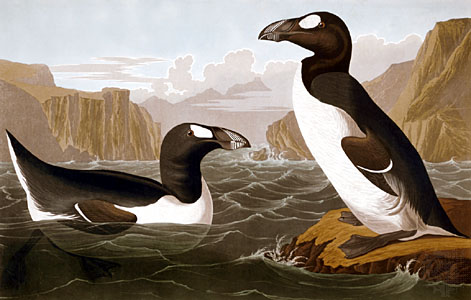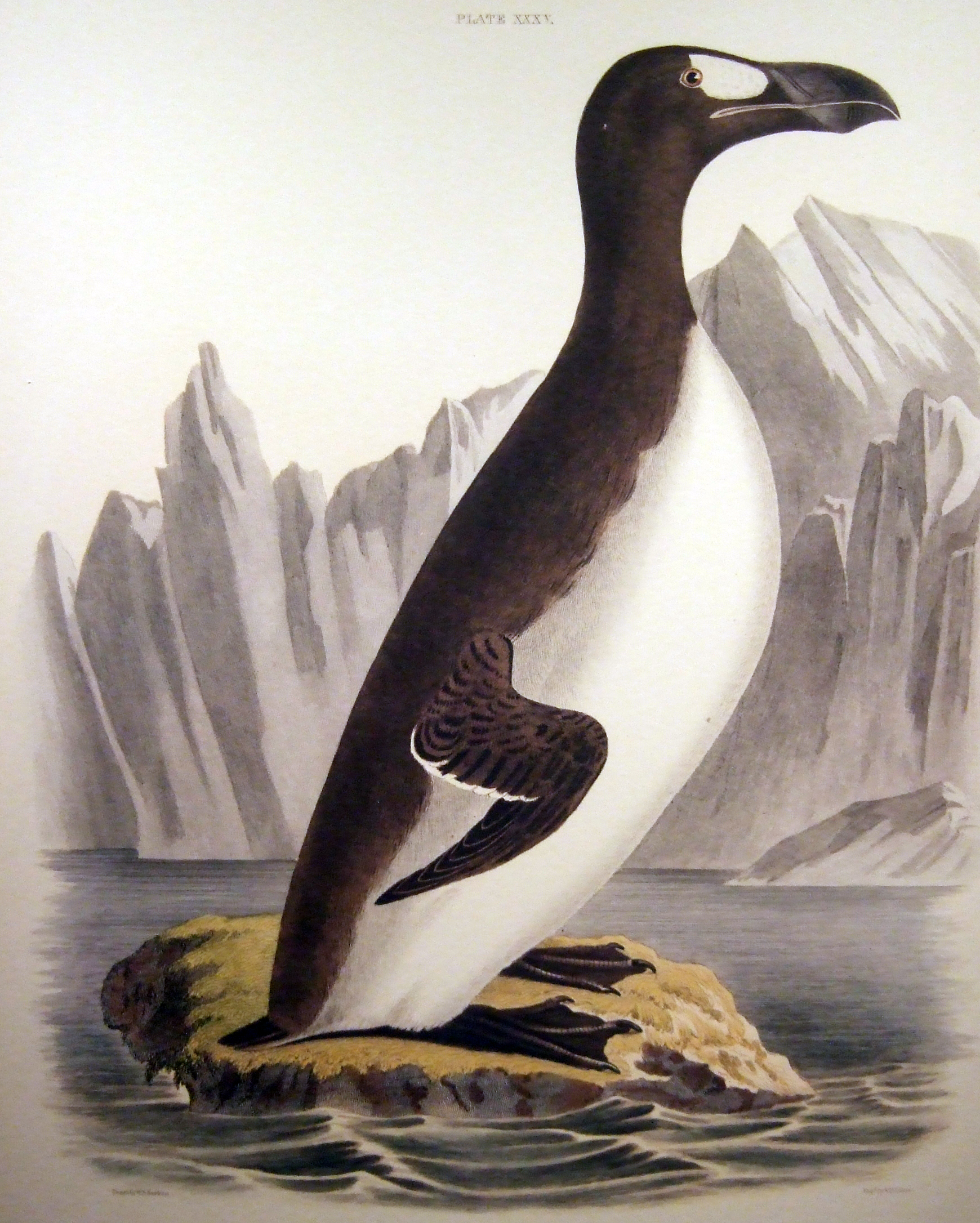
Pinguinus impennis
TAXONOMY
Pinguinus impennis. Formerly known as Alca impennis Linnaeus,
1758.
OTHER COMMON NAMES
English: Garefowl, penguin (the original bird to be so named);
French: Grand pingouin; German: Riesenalk; Spanish: Alca Gigante.
PHYSICAL CHARACTERISTICS
30.5 in (78 cm); 11 lb (5 kg).
DISTRIBUTION
The great auk ranged across the North Atlantic, south of the
Arctic Circle as far as New England and the British Isles.
HABITAT
Rocky coastlines and adjoining seas. Restricted to a few locations
where the nesting sites could be reached without flying.
BEHAVIOR
The great auk was the most dependent of the alcids on the
ocean because, unlike its relatives, it had lost the power of
flight. Because most observations were made during hunts, little
is known about the species’ normal
BEHAVIOR
. We do know
that great auks spent the winters at sea.
FEEDING ECOLOGY AND DIET
Presumed to have fed mainly on fish.
REPRODUCTIVE BIOLOGY
Bred in enormous rookeries on a handful of islands: St. Kilda,
the Orkneys, islands off Newfoundland, and islands off the
southern coast of Iceland. A single pear-shaped egg, which
weighed approximately 14 oz (400 g), was laid on rock. Each
egg carried a unique pattern of spots and blotches, which probably
aided the parents in identifying their own egg.
CONSERVATION STATUS
Extinct. By the beginning of the nineteenth century, 300 years
of reckless human predation of the easily-captured auks seriously diminished their numbers. Hunting and egg-collecting
continued at an unsustainable rate, exacerbated by a volcanic
eruption in 1830 which destroyed one of the bird’s last breeding
grounds. In 1844, the last two auks known to exist were
killed on the island of Eldey, off the southwest coast of Iceland,
and their egg was collected and sold.
SIGNIFICANCE TO HUMANS
When the great auk was discovered by mariners, it was looked
upon as an excellent source of provisions. The easily-caught
birds soon became the focus of an unrestrained industry, in
which their feathers were plucked and their bodies were boiled
alive for their high oil content. This havoc continued until it
became uneconomical due to the lack of auks.
Photo Gallery of - Great auk




 Animalia Life
Animalia Life